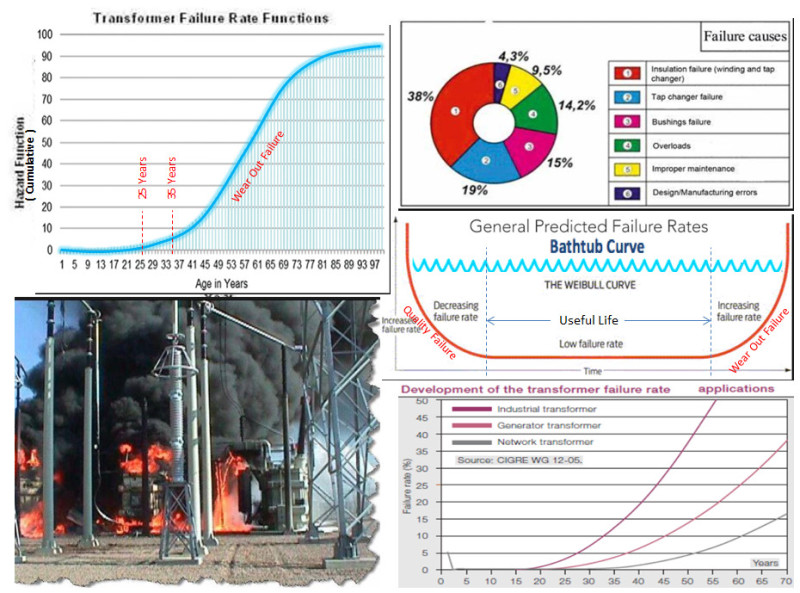kevin1990
Electrical
- May 17, 2016
- 4
Hi all,
The IEC 60076-7 provides a mathematical approach of finding the loss of life of transformer. I have recently been involved in finding how much to overload a transformer without causing significant Loss of Life.
I just want to make sure that my understanding of the IEC standard is correct.
Table 4 gives you the limits of Normal cyclic loading, Long time emergency loading and short time emergency loading. My understanding is that these limits values, if ever exceeded, will cause permanent damage to the transformer. However, it implies that the loss of life will be 'accelerated' compared to normal loss of life for a transformer operated at rated loading.
I do understand that if factors such as low ambient temperatures or forced cooling are used after the overload condition, this will produce a normal loss of life.
Finally, anyone with a fair guess the life of a transformer if properly maintain. We have transformers more than 60 years and perfectly fine.
Thank you
kevin
The IEC 60076-7 provides a mathematical approach of finding the loss of life of transformer. I have recently been involved in finding how much to overload a transformer without causing significant Loss of Life.
I just want to make sure that my understanding of the IEC standard is correct.
Table 4 gives you the limits of Normal cyclic loading, Long time emergency loading and short time emergency loading. My understanding is that these limits values, if ever exceeded, will cause permanent damage to the transformer. However, it implies that the loss of life will be 'accelerated' compared to normal loss of life for a transformer operated at rated loading.
I do understand that if factors such as low ambient temperatures or forced cooling are used after the overload condition, this will produce a normal loss of life.
Finally, anyone with a fair guess the life of a transformer if properly maintain. We have transformers more than 60 years and perfectly fine.
Thank you
kevin

